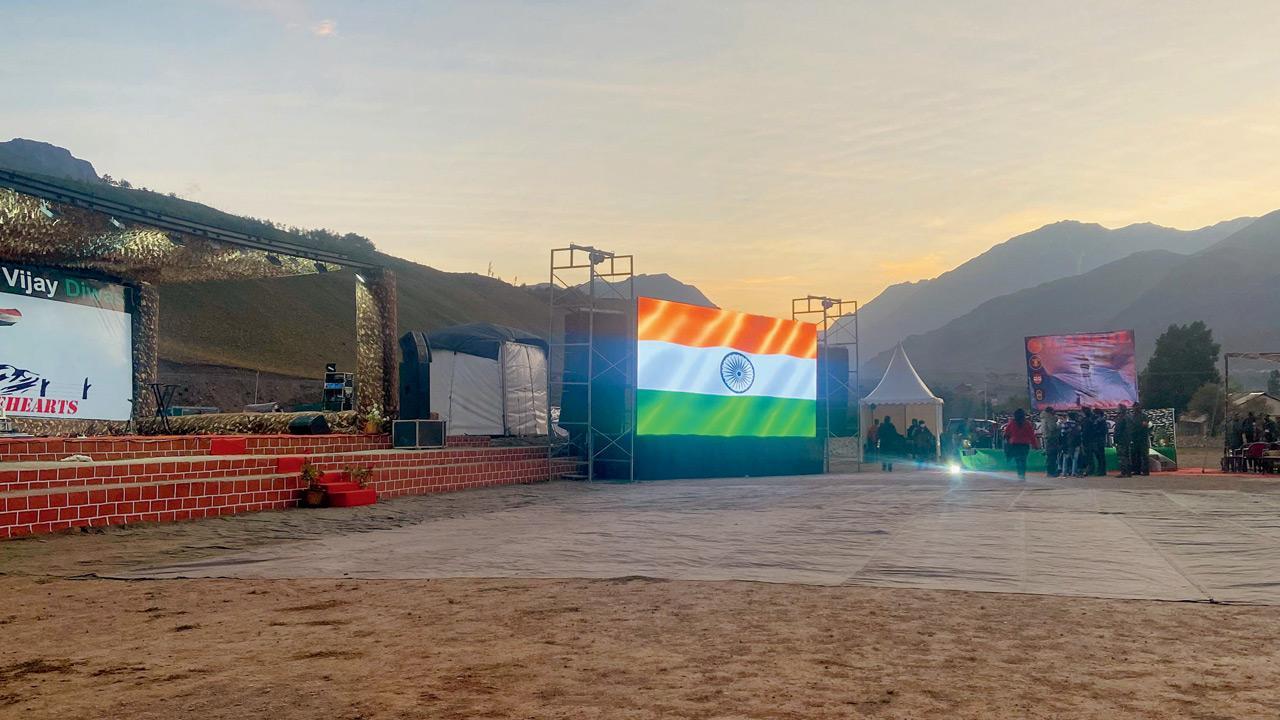Brief sketch of a unique Indian city off Leh, at striking distance from POK, that has more to it than two warring nations

The Indian Army base in Drass, where the filmmakers of Kargil War hero, Captain Vikram Batra’s biopic, Shershaah, held their trailer launch to coincide with Vijay Diwas
The year 1979 is when Ayatollah Khomeini, exiled in Paris at the time, established the Islamic Republic of Iran—putting an end to Shah’s reign and ostensibly the Persian dynasty, through what was called the ‘Islamic revolution’. It’s also the year Kargil in Ladakh was deemed a full-fledged district by the state of Jammu & Kashmir. What could these two wholly disparate events, separated by thousands of kilometres, have to do with each other?
ADVERTISEMENT
The fact that as you drive down the packed Kargil market, you observe several posters of the Ayatollah— signifying a following that might befuddle an outsider. The local resort-owner Zakir Hussain Jafri tells me, “That link is theological, since about 80 per cent of Kargil are Shia Muslims.”
The majority in Leh (Four and half hours away) is likely to be Buddhist. Neither religion openly embraces alcohol and weed. Nor do locals. Sheesha/hookah is favoured poison. People in Kargil, I notice, refer to Ladakhi (Tibetic) language as Buddhist itself. They speak Balti/Purgi. As for music, Kargil cabs, without exception, have the coolest Bollywood playlists north of Punjab perhaps.
That we even think of Kargil as a proper city might befuddle Indians more. Over a decade ago, when Jafri, 32, had moved to New Delhi for higher education, building landlords would hear where he’s from, and go, “Arrey! Tum bach gaye (you’re alive)?” Kargil is simply known for the 1999 war, between India and Pakistan—the last conventional battle of 20th Century, between two nuclear armed nations, no less.
Indian village Hundarman in Kargil- the green stretch at the far end, locals say, is POK
That theatre of war though was about 60-70 kilometres up from Kargil town, which of course didn’t just survive fine, it also took in people from Drass and Batalik sectors, where the shelling/bombings were on. Those people moved in among residents of Kargil (currently a lakh-plus, up to Leh), who in turn set up community kitchens in their homes, making hundreds of rotis a day, to keep ’em all going.
Nothing like this had ever happened before, Jafri recalls: “I remember in the early ’90s, Kargil used to get a lot of foreign, especially European, tourists, who’d come down to Suru valley, for long treks, expeditions. Since 1999, the place also got internationally associated with a war-zone; they stopped coming.” The war lasted two-three months.
You can tell the earlier/obvious touristic fascination for Kargil, though. The mountains are barren, light brown ridges. They seem close enough to touch. And they talk you into such calm submission, before nature at its barest and most majestic, that if you stay quiet, staring for too long, you might encounter the meaningless of life itself. And I’m not talking about possible hallucinations, nausea and breathlessness, which might escape you, if you’re inherently a ‘mountain person’—yes there is such a type, I reckon. Or you turn into one, shortly.
River Suru flows through the valley. If you know better (or with someone who does), you could slide down to casually dip your feet into the river, through a passage and a wooden bridge created not for travellers, but for locals to walk to the village across—once the river dries/snows up in the winter months.
That’s between (mid to end) November and April, about four months every year, when Kargil at harshly sub-zero temperatures is cut off from adjoining civilizations. People here start preparing for winter early—collecting firewood, drying up vegetables, turning tomatoes into puree, storing rice, flour, meats… “Sitaki (stocking) starts in September,” driver Saeed Raza, 29, says. Winter is coming, as we speak.
It’s the same months that the Pakistani Army, posing as infiltrators, had planned and then mounted certain tops, in order to strategically place themselves over Srinagar-Leh National Highway 1, in May, 1999—to isolate Kargil/Ladakh further, through artillery/associated attacks. Alert shepherds had first reported this incursion to the Indian Army.
Locals don’t know these shepherds’ names. Thought they’d be heroes. But given the level of defence casualties that followed, locals say, the fit/young from many Kargil families were also recruited to help the Army as support staff (for supplies, etc). They were compensated for it. But since they were only temporarily commissioned, unsure if any of them won proper gallantry awards.
Steeply drive up 10-15 kilometres from Kargil town—if you can avoid the car from falling off narrow ledges for roads—Pakistan/POK is right there; at kissing distance, looking back at you. You see villages like Shilikse, and the last one, Hundarman (that became part of India after the 1971 Bangladesh War) that have immediate families, locals say, on both sides of the border/Line of Control. “Thankfully with WhatsApp now, they can at least talk to each other,” Jafri says.
Few years ago, Jafri recalls, the cast and crew of a “South Indian film” (he doesn’t know which) had come down to shoot in Kargil city. They decided to hire extras from among residents. It’d be cheaper. A set of them were supposed to play Pakistani soldiers; another set from the Indian Army—this was a war film, of course. Locals, he tells me, point-blank refused to play Pak Army. Those extras had to be flown down from elsewhere. Nature, at its peak, of course, knows no such nation states.
Mayank Shekhar attempts to make sense of mass culture. He tweets @mayankw14
Send your feedback to mailbag@mid-day.com
The views expressed in this column are the individual’s and don’t represent those of the paper.
 Subscribe today by clicking the link and stay updated with the latest news!" Click here!
Subscribe today by clicking the link and stay updated with the latest news!" Click here!






